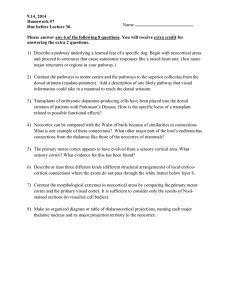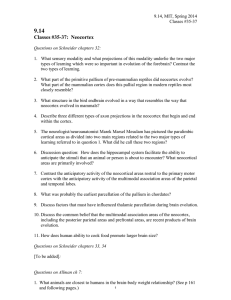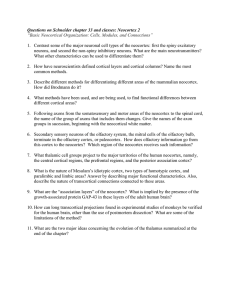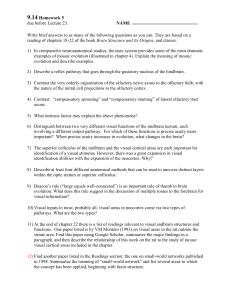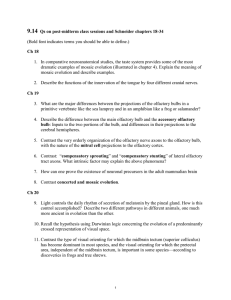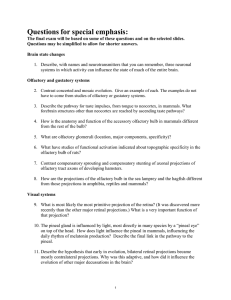9.14 Classes #35-38: Neocortex (Supplemental Questions on Nauta)
advertisement
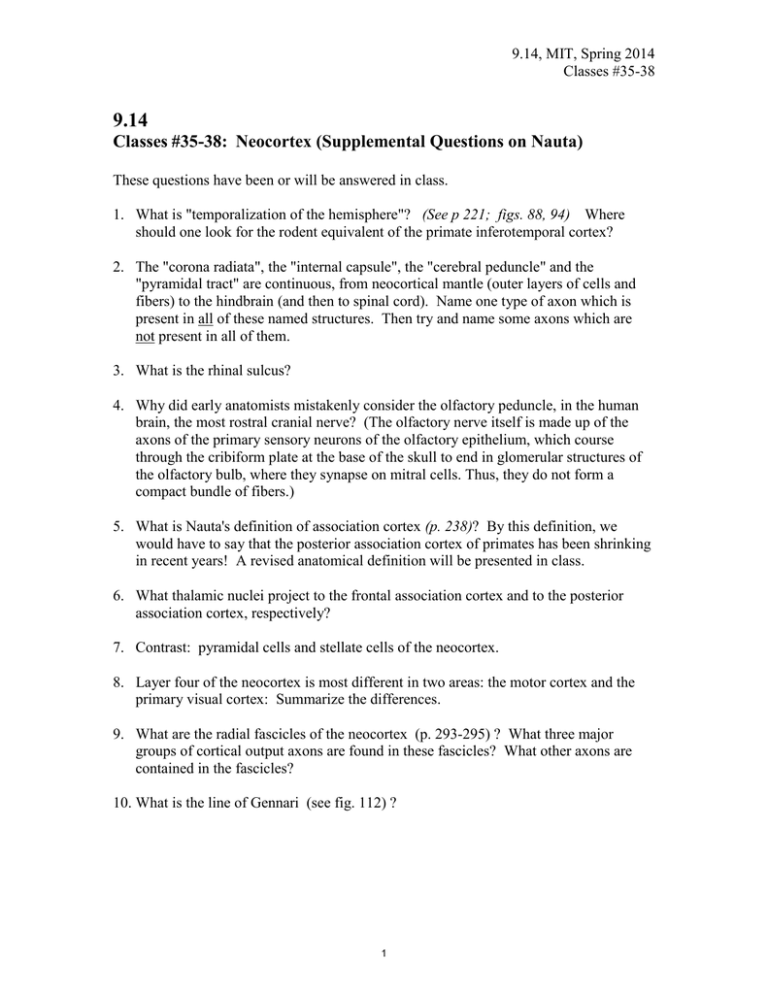
9.14, MIT, Spring 2014 Classes #35-38 9.14 Classes #35-38: Neocortex (Supplemental Questions on Nauta) These questions have been or will be answered in class. 1. What is "temporalization of the hemisphere"? (See p 221; figs. 88, 94) Where should one look for the rodent equivalent of the primate inferotemporal cortex? 2. The "corona radiata", the "internal capsule", the "cerebral peduncle" and the "pyramidal tract" are continuous, from neocortical mantle (outer layers of cells and fibers) to the hindbrain (and then to spinal cord). Name one type of axon which is present in all of these named structures. Then try and name some axons which are not present in all of them. 3. What is the rhinal sulcus? 4. Why did early anatomists mistakenly consider the olfactory peduncle, in the human brain, the most rostral cranial nerve? (The olfactory nerve itself is made up of the axons of the primary sensory neurons of the olfactory epithelium, which course through the cribiform plate at the base of the skull to end in glomerular structures of the olfactory bulb, where they synapse on mitral cells. Thus, they do not form a compact bundle of fibers.) 5. What is Nauta's definition of association cortex (p. 238)? By this definition, we would have to say that the posterior association cortex of primates has been shrinking in recent years! A revised anatomical definition will be presented in class. 6. What thalamic nuclei project to the frontal association cortex and to the posterior association cortex, respectively? 7. Contrast: pyramidal cells and stellate cells of the neocortex. 8. Layer four of the neocortex is most different in two areas: the motor cortex and the primary visual cortex: Summarize the differences. 9. What are the radial fascicles of the neocortex (p. 293-295) ? What three major groups of cortical output axons are found in these fascicles? What other axons are contained in the fascicles? 10. What is the line of Gennari (see fig. 112) ? 1 9.14, MIT, Spring 2014 Classes #35-38 11. How could an anatomist visualize the ocular dominance stripes in striate neocortex (see fig. 116) ? Compare: Patricia Goldman-Rakic's discovery, with Nauta, of columns in the retrosplenial cortex (posterior limbic system cortex near the posterior end, or splenium, of the corpus callosum) -- see fig. 117. 12. What association fibers of the human cerebral hemisphere are prominent even in gross dissections of the brain (fig. 115) ? These are not evident in brains of small animals like rodents, although some long association fibers do exist in these animals. Additional questions covered in classes and in the Schneider chapters: 13. What is the major morphological characteristic of the neocortex? How do different regions of cortex differ from each other? 14. Describe the connections of the different cortical layers. 15. What are the major types of neocortical areas? What are "Brodman's areas" and what is the basis of their differentiation? 2 MIT OpenCourseWare http://ocw.mit.edu 9.14 Brain Structure and Its Origins Spring 2014 For information about citing these materials or our Terms of Use, visit: http://ocw.mit.edu/terms.
